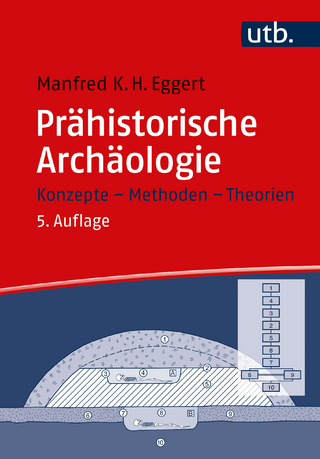
The Luxor Obelisk and Its Voyage to Paris
American University in Cairo Press (Verlag)
978-1-61797-995-8 (ISBN)
Transporting the Luxor obelisk from Egypt to Paris was one of the great engineering triumphs of the early nineteenth century. No obelisk this size (two hundred and fifty tons) had left Egypt in nearly two thousand years, and the task of bringing it fell to a young engineer, Apollinaire Lebas, a man of extraordinary resolve and ability. His is a tale of adventure, excitement, and drama, but one hardly known to the English-speaking world.
Lebas’ team was struck by the plague; they ran out of wood; they had to wait four months for the Nile to rise to free their beached ship. But in the end, The Luxor, with its precious cargo on board, sailed down the Nile. On October 25, 1836 before two hundred thousand cheering Parisians, Lebas raised his obelisk. He was rewarded handsomely by his king, a medal with his name on it was struck, and his body lies in the famous Pere Lachaise Cemetery in Paris along with French luminaries. Now this first-ever translation of Lebas’s account, including digitally enhanced copies of his beautiful drawings, makes his remarkable story available to a wide audience.
Jean-Baptiste Apollinaire Lebas, born 1797, was a French engineer who in 1830 was charged with transferring an obelisk from Luxor to France. He was widely celebrated for this achievement. Bob Brier is a world-famous Egyptologist who has conducted research on pyramids, obelisks, and mummies in fifteen countries. A senior research fellow at the C.W. Post campus of Long Island University, he is the author of seven books, including The Murder of Tutankhamen, and hosted The Great Egyptians which aired on TLC. Colette Fossez Sumner is adjunct instructor of Romance Languages and Literatures at Hofstra University.
Translators’ Acknowledgments
Translators’ Introduction
Introduction
PART 1
Departure — Crossing of the Vessel Luxor — Lowering of the Monument
Chapter 1
First negotiations about one of the Egyptian obelisks — The opinion of Mr. Champollion the Younger on the obelisks of Luxor — The mission of Mr. Taylor in Egypt — The giving to France of one of the obelisks of Luxor by the viceroy — Construction of the vessel Luxor — Preparations for departure
Chapter 2
Departure from Toulon and arrival at Alexandria — Interview with Muhammad Ali — Departure from Alexandria — Rosetta — Aspects of the Nile and its banks — Arrival at Cairo — Krali Effendi — Departure from Bulaq for Upper Egypt — The Pyramids, Memphis — Sherif Bey — Dendara — The flotilla arrives in sight of Thebes
Chapter 3
Arrival in Thebes — First examination of the obelisk; the stone is cracked — Demolition of the homes encircling the monolith on the right — General aspect of Luxor — A description of all the monuments — Reconnoitering the localities — Some historical details
Chapter 4
Preparatory work for lowering the obelisk — Description of equipment — Outbreak of cholera — Continuation of the work — Uncovering the base of the obelisk — History of the obelisks of Luxor; text of the inscription on the Paris one
Chapter 5
Lowering the obelisk and loading it onto the Luxor
PART 2
Excursion in Nubia
Chapter 1
Esna — Funerary rites — Ancient tombs of al-Ka‘b — Merriment and thoughtlessness of the Arab — Temple of Edfu — Night thieves — Gebel Silsila — Kom Ombo — Aswan — The Arab Baraka — Cleverness of the Arab — Mosque of the holy man — The cataract — Philae — Temple of Girga — Sebua — Amada — Derr — Ibrahim — Whirling sandstorms — Caravans in the desert — Abu Simbel — Colossal statues of Ramesses — Maharraqa — Dakka — Dendur — Kalabsha — Qertasi — Debod — Return to Philae, to Luxor
Chapter 2
Thoughts on the formation of the land of Lower Egypt — The Nile in ancient times did not irrigate the Valley of Egypt — Opinion of Herodotus on the subject — Geographical and political divisions of Egypt — Taxes levied with blows of the whip — Conscription for the army — The tendency of the Arabs to steal — Floodings of the Nile — Fertility of the land of Egypt — Happiness and skill of the Arabs — Their sobriety — Muhammad Ali — His preoccupation with war keeps him from organizing the country — Habits, character, and clothing of Arab women — Marriage ceremonies — Almees — Dance of the Bee — North Africans and the Agows — Costumes — Unchanging climate and atmospheric phenomena in Egypt — Its influence on man and animals — The khamasin— Imposing grandeur of the Egyptian monuments — Voyage to Rosetta — New meeting with Muhammad — Rising of the Nile and launching of the Luxor — Its departure for Alexandria; return to France — Arrival at Toulon
PART 3
Work in Paris
Departure of Mr. Lebas for Paris — He is charged by Mr. Thiers with the erection of the obelisk — Construction of the docking cradle — Putting the apparatus in place and hauling over land — First moving of the obelisk: passage on the bridge ramp — Second moving: hauling to the Place de la Concorde — Third moving: hauling up to the viaduct — Fourth moving: the obelisk arrives at the level of its pedestal — Setting up the erection equipment — Erection of the obelisk
PART 4
Fontana
“Water on the ropes!” Evaluation of the tradition of this phrase — Examination of Fontana’s work — Details of the erection of the obelisk of Rome, and a description of Fontana’s Castle
Appendix
Overview of the mechanical arts of ancient and modern people — Calculations relative to lowering and erecting the Luxor obelisk
Index
| Erscheinungsdatum | 10.05.2021 |
|---|---|
| Übersetzer | Bob Brier, Colette Fossez Sumner |
| Zusatzinfo | 15 b&w |
| Sprache | englisch |
| Maße | 241 x 165 mm |
| Gewicht | 900 g |
| Themenwelt | Geschichte ► Allgemeine Geschichte ► Vor- und Frühgeschichte |
| Geschichte ► Allgemeine Geschichte ► Neuzeit (bis 1918) | |
| Geisteswissenschaften ► Geschichte ► Regional- / Ländergeschichte | |
| Geschichte ► Teilgebiete der Geschichte ► Technikgeschichte | |
| Geschichte ► Teilgebiete der Geschichte ► Wirtschaftsgeschichte | |
| Technik ► Architektur | |
| ISBN-10 | 1-61797-995-3 / 1617979953 |
| ISBN-13 | 978-1-61797-995-8 / 9781617979958 |
| Zustand | Neuware |
| Informationen gemäß Produktsicherheitsverordnung (GPSR) | |
| Haben Sie eine Frage zum Produkt? |
aus dem Bereich


